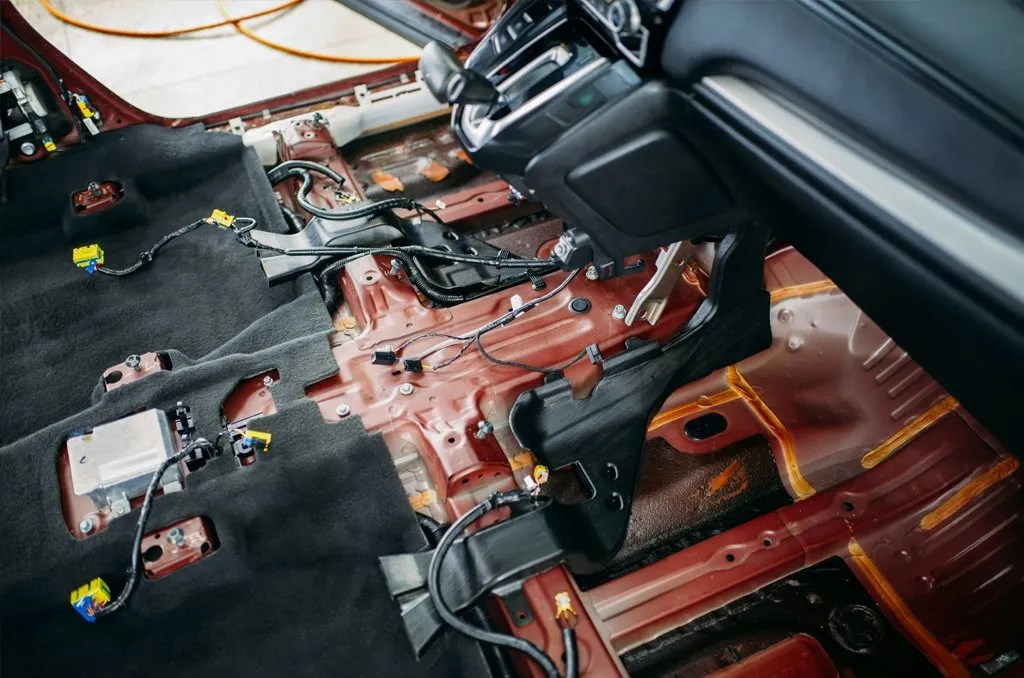What is sound deadening?
Published date: 07 July 2024

The term “sound deadening” refers to a number of techniques designed to reduce unwanted noise and vibration across various environments. From enhancing the acoustics in recording studios to providing a quieter ride in vehicles, sound deadening plays a vital role in improving comfort and functionality. In this blog post, we’ll delve into the concept of sound deadening, its materials and applications, with a particular focus on car sound deadening.
Understanding Sound Deadening
Sound deadening refers to the process of reducing noise through the application of a layer of material over another surface, dampening the vibrations that cause unwanted sounds. The primary goal is to create a quieter, more controlled environment, whether in a vehicle, building, or other space. You might also come across the terms “sound dampening” and “sound damping”. It is useful to know that these terms are often used interchangeably, even though each of them describes slightly different processes.
How Sound Deadening Works
A vibrating material flexes and returns to its neutral state rapidly, re-radiating its vibrations back into the air. Think of a diving board, bending and oscillating. Pieces of sheet metal or similar materials fluttering this way can generate an extremely loud sound. Effective sound deadening materials act as shock absorbers: by resisting the flexing-and-releasing of the oscillating surface, such materials subtract energy from the vibrations. The end result of this process is a significant reduction of the noise emitted.
Key Materials Used in Sound Deadening
Several materials are commonly used for sound deadening, each with unique properties that make them suitable for different applications. Key materials include:
- Polyurethane Foams: Lightweight and versatile, these sound deadening foams are excellent for absorbing sound waves and reducing noise levels.
- Felt: Dense and fibrous, felt is effective at damping vibrations and is often used in automotive applications.
- Butyl Rubber: A tough synthetic rubber, enhanced with increased elastomeric properties to better absorb vibrations.
- Viscoelastic Acrylic Polymer: A liquid-applied material that effectively reduces noise, vibration, and harshness (NVH) in appliances and vehicles.
One notable product in the field of sound deadening is Teroson PU 9500 Foam. This polyurethane-based cavity-filling foam is specifically designed to fill and seal cavities such as A-, B-, and C-pillars, door sills, and frame components. The foam comes in an aerosol can for easy application, cures without needing moisture, and prevents NVH.
Car Sound Deadening
Sound deadening has a wide range of applications, from industrial to residential settings. However, one of the most prevalent uses is in the automotive industry. Car sound deadening involves reducing noise, vibration, and harshness (NVH) within vehicles, consequently enhancing passenger comfort and improving the driving experience. Common areas targeted for sound deadening in cars include the engine bay, floor panels, doors, and roof. By applying sound deadening materials, manufacturers and car owners can significantly reduce road noise, engine sounds, and other disturbances.
At Conro Electronics, we’ll show you how to improve product reliability while increasing performance and lowering costs. Our team of technical support specialists will provide your company with dependable global supply, unrivalled efficiency, and superior technical support.
Feel free to contact us on 0208 953 1211 or send us an email to info@conro.com




Comments
There are currently no comments, be the first to comment.